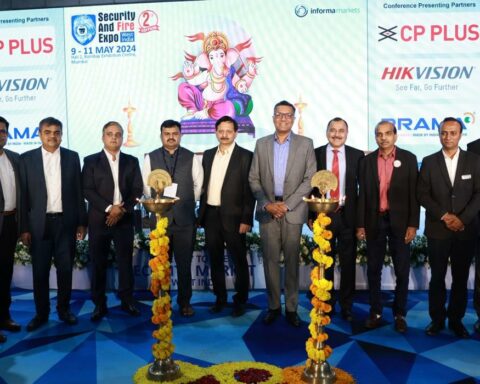In the age of high-paced technological progress, urban management is now undergoing an important transition. IoT (Internet of Things) is at the heart of this transition, changing how city planners approach managing infrastructure.
Today, IoT has turned into a fundamental element of increasing efficiency in urban environments, especially when it comes to optimizing various city operations – from enhancing wastewater management systems to monitoring and regulating all modes of transportation.
The Significance of IoT in City Infrastructure Management
IoT is one of the biggest breakthroughs in urban network management. IoT devices are of great use when it comes to the task of collecting, processing and reporting back data that urban planners, as well as policymakers, can use in their everyday activities.
With IoT, city managers can obtain real-time information about different points of their infrastructure such as traffic patterns or energy consumption and waste management. This, in turn, enables them to make informed decisions on how best they should optimize these systems so that they run as efficiently and effectively as possible.
Improving Efficiency and Lowering Costs
Real-time monitoring is one of the significant benefits that IoT brings to network management. These devices carefully keep tabs on different aspects of urban networks, such as traffic flow and monitoring energy consumption in buildings and reservoir levels. Access to this real-time information allows city administrators to promptly identify issues, address them before they become critical problems, and monitor how effective their optimization strategies are over time.
IoT devices also automate many elements of routine tasks in operations. This automation reduces human errors to a great deal and simultaneously frees up city personnel for other, more important issues.
Predictive maintenance is another notable advantage of IoT in network management. By analyzing trends of data, IoT devices can predict the possible failures in different areas helping city officials to take preventive actions. This prediction helps to avoid large-scale breakdowns or outages and avoid long-term disruptions in service delivery.
IoT Use Cases in City Infrastructure
Urban network management depends significantly on different types of IoT devices that play a specific role. Below are a few use cases that showcase this seamless integration:
Intelligent Traffic Management Systems: These smart sensors are integrated into city infrastructure and continuously analyze traffic patterns. Through dynamic changes in traffic light timings, they help relieve the congestion due to slow-moving or stuck cars and make roads safer to use.
Advanced Water Quality Monitoring: These sensors are installed in reservoirs and water treatment plants where they do a continuous evaluation of the quality of water. Their real-time data is crucial in identifying contamination and getting rid of it as quickly as possible so that the water supply for the city is clean and safe.
Smart Building Energy Regulators: IoT devices inside buildings are crucial in the push for energy efficiency. They carefully monitor energy consumption and adjust heating, cooling, and lighting systems according to occupancy levels during the day.
Efficient Waste Management Solutions: The installation of IoT sensors in garbage containers throughout the city presents a smart approach to waste management. These sensors monitor the fill levels in bins and alert when they are ready for collection, streamlining the entire waste collection process.
How Wastewater Treatment Plants Benefit from IoT
Wastewater facilities are important for healthy urban living and environmental cleanliness. They are often the unsung heroes in a city, regularly clearing wastewater, filtering out toxic pollutants, and safely returning it to the city.
However, managing these facilities is not without challenges. Traditional monitoring methods are many times tedious and prone to human error. Unexpected failures in the treatment systems can also lead to large repair bills and even raise potential environmental hazards.
IoT technologies offer a transformative solution to these challenges. IoT enables the collection of critical, real-time data covering various facets of wastewater treatment. Continuous monitoring becomes possible for essential water quality parameters such as pH, temperature, turbidity, and specific chemical concentrations by deploying sensors throughout the facility.
This real-time data allows for a detailed analysis, which is instrumental in refining the treatment processes. It ensures adherence to environmental regulations and aids in maintaining consistent quality standards.
Why IoT is Important for Traffic Management
Urban localities require efficient traffic control in order to facilitate smooth movement of vehicles and people, improve safety levels, and reduce traffic congestion. However, achieving these goals is quite a challenge, especially with the use of legacy, timer-based traffic systems. These systems tend to be inefficient when it comes to adapting to the routing patterns of very busy city streets where traffic keeps fluctuating throughout the day, especially during peak hours.
IoT offers a promising solution to these challenges, however. IoT sensors can provide continuous observation of traffic movement across busy intersections. Their real-time data processing capabilities also allow for the dynamic adjustment of traffic signals, aligning them more accurately with the actual traffic flow. This real-time adaptation not only reduces waiting periods for commuters but also significantly alleviates congestion.
Besides improving traffic signal timing, the use of IoT in traffic systems improves communication by relaying information about current traffic conditions to commuters. This gives drivers and pedestrians information about current traffic conditions, which can be easily added to navigation applications or digital services. This information enables users to make better travel choices, helping them to effectively navigate through urban spaces and avoid traffic jams.
Enjoy The Benefits of Adopting IoT In City Infrastructure Development
With urban populations regularly increasing, it is imperative that city infrastructure development keeps up with this rising demand. The implementation of IoT technology in water treatment and traffic management systems enables cities to become more efficient and sustainable in the long term.
Whether it is through critical decision-making practices or efficient use of resource allocation, the role that IoT plays in developing and sustaining modern cities cannot be overemphasized. By embracing IoT, cities can create a more connected and smarter landscape for their citizens for years to come.
 Author Information: Subbu Seetharaman, Director of Engineering for Lantronix’s India. Subbu has over 25 years of experience in leading software development teams, building geographically distributed, high-performing teams involved in developing complex software products around programmable hardware devices. Lantronix is a global provider of turnkey solutions and engineering services for the internet of things (IoT) and remote environment management (REM).
Author Information: Subbu Seetharaman, Director of Engineering for Lantronix’s India. Subbu has over 25 years of experience in leading software development teams, building geographically distributed, high-performing teams involved in developing complex software products around programmable hardware devices. Lantronix is a global provider of turnkey solutions and engineering services for the internet of things (IoT) and remote environment management (REM).






